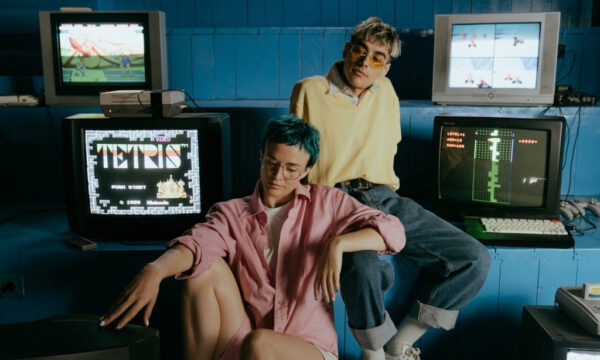The relationship between films and gaming

The convergence between films and gaming is a development that has unfolded gradually and inexorably over the last few decades. Both films and video games represent powerful storytelling platforms, each commanding vast global audiences. While historically they developed as separate mediums, their intersections have deepened, giving rise to a host of unique entertainment experiences. From thematic inspirations to technology sharing, they have informed and enriched each other in various ways. The resulting hybrid experiences have expanded the horizons of what’s possible in entertainment, sparking wider interest from both creators and consumers. This continual dialogue between the two mediums suggests a future where the lines might blur even further, leading to new forms of narrative engagement and artistic expression.
Impact of films on gaming
The influence of cinema on the realm of video games is evident in many gaming titles. Over the years, the atmospheric tension of horror films, the grandeur of epic dramas, and the suspense of thrillers have found their way into the gaming domain. Game developers have long recognised the potential of incorporating cinematic storytelling techniques to add depth to their creations. By integrating elements such as camera angles, atmospheric soundtracks, and layered narratives, games have evolved into immersive experiences that rival the emotional depth of movies. When players encounter these cinematic elements in a game, it allows them to not just observe but actively engage, making decisions and influencing outcomes. This active participation transforms the narrative from a passive viewing experience, as in films, to an interactive journey where players have agency, enhancing their immersion and connection to the story.
Influence of gaming on films
On the flip side, the richly detailed and expansive universes inherent in many video games have attracted the attention of filmmakers. The deep lore, iconic characters, and vast worlds presented in games provide a treasure trove of material ripe for cinematic adaptation. While not all adaptations have been universally acclaimed, the trend itself underscores the recognition of video games as legitimate and rich sources of storytelling. Moreover, the episodic and branching nature of game narratives has inspired filmmakers to experiment with non-linear storytelling and more interactive movie experiences. Platforms like Netflix have even dabbled in choose-your-own-adventure formats, directly borrowing from gaming mechanics. This cross-influence not only brings game stories to a broader audience but also challenges the traditional passive movie-watching experience, introducing elements of choice and engagement hitherto reserved for the gaming world.
Technology advancements in films and gaming
Technological advancements play a pivotal role in the evolving landscape of films and gaming, with each industry frequently borrowing from the other. Films initially pioneered motion capture, capturing nuanced performances from actors for more lifelike animations. This technology was soon adopted by the gaming industry, where it ushered in a new era of hyper-realistic characters and animations. In contrast, the gaming world’s proficiency in real-time rendering has been a revelation for filmmakers. It allows for dynamic visual effects and adjustments on-the-go, significantly streamlining the post-production process. The iterative evolution of these technologies has led to an escalating arms race of innovation, each advancement pushing the boundaries of what is visually and experientially possible, ultimately elevating both mediums to unprecedented levels of immersion and realism.
Effect on the audience
Incorporating elements of gaming into films has a profound impact on audience engagement and perception. For gamers, seeing familiar worlds, characters, or mechanics transition onto the big screen can be deeply satisfying, fostering a more profound connection to the storyline. This sense of recognition and nostalgia enhances their cinematic experience. For those less acquainted with video games, the integration offers fresh narrative structures and visual aesthetics that pique curiosity. Such innovations can serve as a gateway, motivating them to delve into the world of gaming. This intertwining of mediums effectively broadens the horizons for audiences. It encourages cross-platform exploration, where cinema lovers may find themselves drawn to gaming consoles and vice versa, enriching the breadth and depth of entertainment available to them.
The start of a lasting relationship
The intertwined journey of films and gaming can be traced back to the latter part of the 20th century. During its infancy, the relationship was marked by straightforward game adaptations of popular films or vice versa. These early intersections were often met with mixed results and critiques. However, as both industries matured, there was a growing appreciation for each other’s unique strengths and storytelling potential. Today, the relationship is characterised less by mere adaptations and more by deep-rooted collaborations. Filmmakers and game developers now frequently consult one another, ensuring faithful renditions and innovative cross-medium storytelling. This dynamic evolution from simple translations to collaborative creations hints at a bond built on mutual respect and shared ambition. Both sectors continually seek innovativeness to bring something new and alluring. That’s what enables the industries to achieve a competitive advantage.
What to expect from the future
Peering into the horizon, the melding of films and gaming appears bound for even deeper integration. Innovations like virtual and augmented reality are poised to redefine audience engagement, blurring the lines between spectatorship and participation. The passive act of watching a film may evolve into an interactive experience where choices can alter narrative outcomes, borrowing from gaming’s multi-path storylines. Similarly, games may adopt more intricate narratives, rivalling the plot depths of blockbuster films. These technologies will serve as bridges, further intertwining these mediums, and ushering in a new era of entertainment. As they continue to influence and elevate each other, the future promises a synthesis of cinematic storytelling and interactive immersion, creating experiences that are both deeply engaging and emotionally resonant.
The editorial unit
























Facebook
Twitter
Instagram
YouTube
RSS